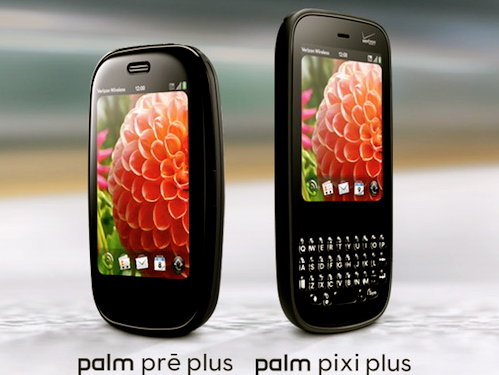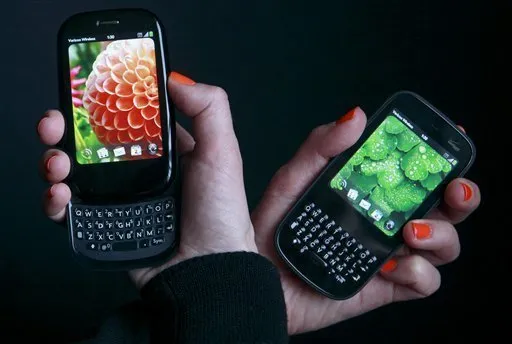Palm Pixi – A Classic Smartphone That Tried to Redefine Mobile Simplicity
Advertisment
In the fast-paced world of smartphones, we often celebrate brands like Apple, Samsung, and Google for shaping modern mobile technology. However, before these giants took complete control of the industry, several innovative companies attempted to carve their own path. One such name was Palm Inc., a pioneer that brought unique devices with advanced operating systems long before Android and iOS became dominant. Among Palm’s lineup was the Palm Pixi, a compact smartphone that aimed to deliver style, functionality, and a refreshing take on mobile communication.
The Palm Pixi was officially launched in 2009, following the success of the Palm Pre. While the Pre was designed as Palm’s flagship model, the Pixi targeted a younger audience with a lighter, thinner, and more affordable device. Even though it did not achieve massive commercial success, the Palm Pixi holds an important place in smartphone history.
In this article, created exclusively for MTANDS, we will take a deep dive into the Palm Pixi, exploring its design, features, user experience, market reception, and lasting influence on the mobile industry.
History of Palm Pixi
Palm Inc. was once a leading innovator in mobile technology. Known for its Palm Pilots and Treo smartphones, the company was already respected in the field of handheld computing. However, by the late 2000s, the smartphone industry was evolving rapidly. Apple had launched the iPhone in 2007, and Google introduced Android in 2008.
Palm needed to reinvent itself. The answer came in the form of webOS, an operating system designed from the ground up to be fast, intuitive, and centered around multitasking. The first webOS device, the Palm Pre, was launched in early 2009 and received critical acclaim. Later that year, Palm followed up with the Palm Pixi—a slimmer, more affordable device intended to reach a wider audience.
Palm Pixi Design & Build Quality
One of the most striking aspects of the Palm Pixi was its design. Unlike bulky smartphones of its time, the Pixi was incredibly thin and lightweight, measuring just 10.85mm in thickness.
Key design highlights:
-
Compact Form Factor: The phone was designed to fit comfortably in one hand and easily slide into a pocket.
-
Physical Keyboard: Unlike touchscreen-only devices, the Palm Pixi featured a QWERTY keyboard below its display, making it popular among users who preferred physical typing.
-
Minimalistic Look: With smooth edges and a sleek black finish, it stood out as a stylish alternative.
-
Customizable Back Covers: Palm partnered with Artists for Palm to create special edition back covers, allowing users to personalize their devices.
The Pixi’s build quality was solid, considering its budget-friendly positioning. However, its small display and keyboard limited its appeal compared to the more powerful Palm Pre.
Display & User Experience
The Palm Pixi featured a 2.63-inch capacitive touchscreen with a resolution of 320 x 400 pixels. While this was modest compared to competitors like the iPhone, it was sufficient for everyday tasks like texting, browsing, and checking emails.
-
Multi-Touch Support: The screen supported pinch-to-zoom and gesture-based navigation, which was impressive for its time.
-
User Interface: Powered by webOS, the user interface was fluid, featuring cards-based multitasking—a concept later adopted by Android and iOS.
-
Limitations: The small screen size made web browsing and multimedia consumption less enjoyable compared to larger smartphones.
Operating System (webOS)
The real strength of the Palm Pixi was its operating system—webOS.
Key features of webOS on Pixi:
-
Card-Based Multitasking: Apps could be managed like cards, swiped away to close or rearranged for organization.
-
Synergy Feature: Combined multiple accounts (Gmail, Facebook, Exchange) into one unified inbox and contacts list.
-
Gesture Navigation: Swiping up from the bottom bezel or across the screen allowed smooth navigation without relying heavily on buttons.
-
App Catalog: Though smaller than Apple’s App Store or Google Play, Palm’s App Catalog offered essential applications.
Despite its brilliance, webOS suffered from a lack of developer support, which limited the app ecosystem.
Advertisment
Performance & Hardware Specs
The Palm Pixi was not designed to compete with high-end smartphones. Instead, it focused on affordability and practicality.
-
Processor: Qualcomm MSM7627, 600 MHz
-
RAM: 256MB
-
Storage: 8GB internal (non-expandable)
-
Battery: 1150 mAh (removable), offering up to 5 hours of talk time
-
Keyboard: Physical QWERTY keyboard
Performance-wise, the Palm Pixi handled basic tasks well, but heavy multitasking or gaming pushed the limits of its hardware.
Connectivity & Features
The Palm Pixi came with standard features for its time:
-
3G Connectivity
-
Bluetooth 2.1
-
GPS Support
-
MicroUSB port for charging and data
-
3.5mm headphone jack
However, it lacked Wi-Fi in its initial version, which was a major drawback. Later, the Palm Pixi Plus included Wi-Fi capability.
Camera & Multimedia
The Palm Pixi featured a 2-megapixel camera with LED flash. While basic by today’s standards, it was sufficient for casual photos in 2009.
-
No Front Camera: Limited for selfies or video calls.
-
Music & Media Player: The device supported MP3 playback and had a decent audio output.
-
Storage Limitations: With only 8GB of storage and no SD card slot, multimedia storage was restricted.
App Ecosystem
The Palm App Catalog was still in its early stages. Compared to the iPhone App Store and Android Market (now Google Play), Palm’s offering was small. Essential apps like Facebook, Twitter, and productivity tools were available, but advanced gaming and multimedia apps were lacking.
This limited the device’s long-term appeal.
Market Reception & Sales
When launched, the Palm Pixi received mixed reviews.
Positive Feedback:
-
Stylish and compact design
-
Comfortable physical keyboard
-
Intuitive webOS system
Criticism:
-
No Wi-Fi on original Pixi model
-
Weak hardware specs compared to competitors
-
Limited app ecosystem
While Palm hoped the Pixi would attract younger users, it struggled to gain significant market share.
Comparison with Palm Pre & Competitors
Compared to the Palm Pre, the Pixi was:
-
Thinner and lighter
-
Less powerful in performance
-
Missing Wi-Fi support
Compared to competitors like the iPhone 3GS and early Android devices, the Palm Pixi lagged behind in performance, apps, and display quality.
Advertisment

Advertisment
Strengths & Weaknesses of Palm Pixi
Strengths:
-
Compact, lightweight design
-
Excellent physical keyboard
-
Innovative webOS interface
-
Affordable pricing
Weaknesses:
-
No Wi-Fi (in base model)
-
Limited apps and developer support
-
Small screen size
-
Weak hardware performance
Palm Pixi’s Impact on Smartphone Industry
Even though the Pixi was not commercially successful, it contributed significantly to smartphone innovation:
-
Gesture Navigation inspired modern smartphones.
-
Card Multitasking was later adopted in Android and iOS.
-
Synergy Feature became a blueprint for unified communication platforms.
Why Palm Pixi Failed
The Palm Pixi’s failure was not due to poor innovation but rather:
-
Weak Marketing: Apple and Google overshadowed Palm.
-
Limited Ecosystem: Few apps meant limited user adoption.
-
Hardware Limitations: Outdated specs made it less competitive.
-
Late Entry: Palm entered too late in a rapidly growing market.
Lessons for Modern Smartphone Brands
-
Innovation alone is not enough; marketing and ecosystem are equally important.
-
Hardware must complement software for a balanced experience.
-
Timing matters—being early or too late can decide success or failure.
Conclusion
The Palm Pixi may not have been a game-changer in sales, but it was a symbol of bold innovation. Its lightweight design, gesture-based navigation, and webOS multitasking were ahead of their time. Though Palm as a company could not survive the competitive smartphone era, the Palm Pixi remains a fascinating chapter in mobile history.
For tech enthusiasts and collectors today, the Pixi is more than just a phone—it’s a reminder of how creativity and vision can shape the future, even if success does not immediately follow.
At MTANDS, we believe in revisiting such classic devices to understand how they influenced modern smartphones. The Palm Pixi’s story is proof that even lesser-known devices can leave a lasting impact on the tech world.


